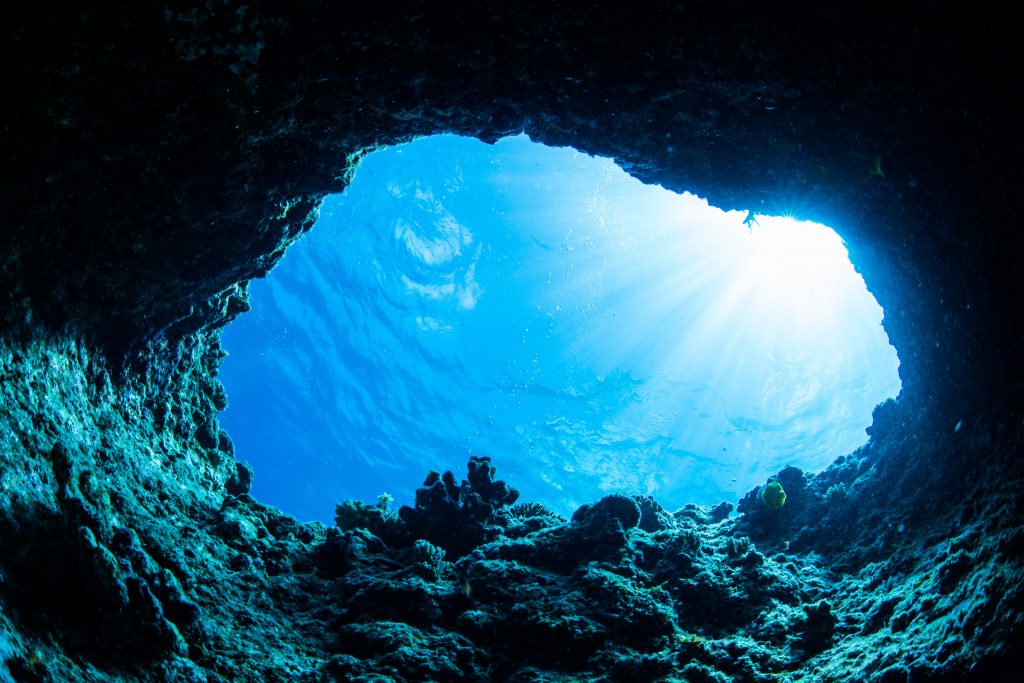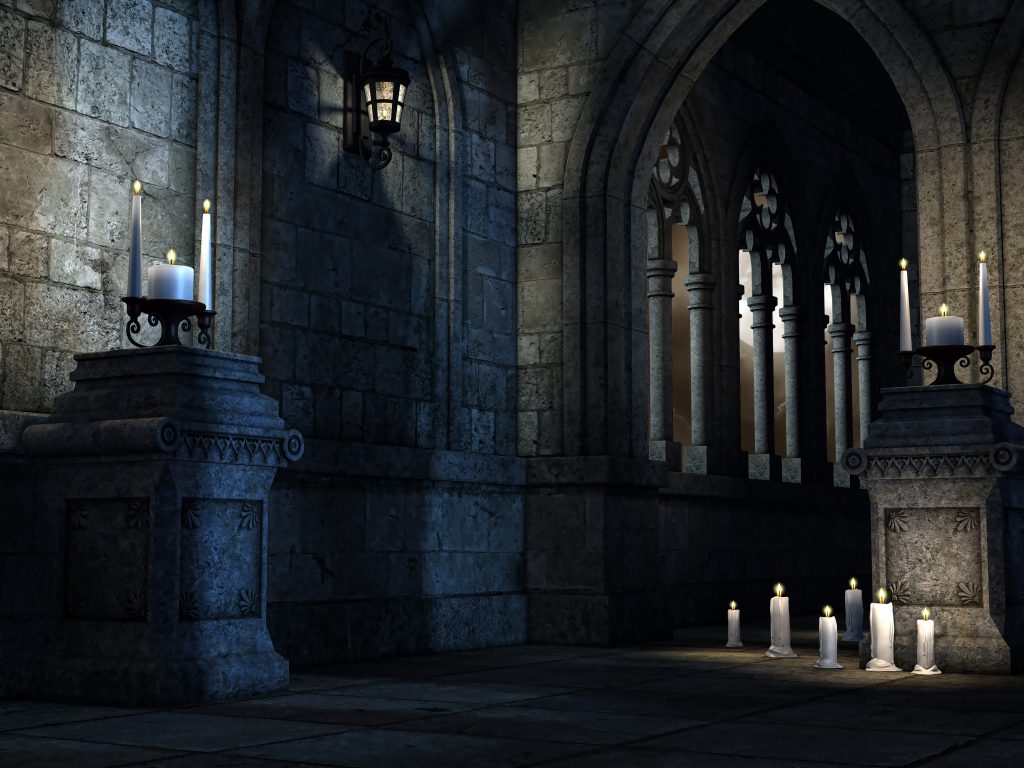 What are Cryptic Zones, Anyway?
What are Cryptic Zones, Anyway?
The planted refugium and its associated cryptic zones have gained a lot of traction among reef aquarists in recent years. This has largely been the result of a growing awareness of the need to control excess dissolved nutrients (e.g. nitrate and phosphate). As hobbyists experiment with specifics like macroalgae species selection, lighting regimes, etc., we continue to fine-tune refugium methodology, particularly with respect to nutrient management.
But what about waste materials such as particulate organic matter? Surely, you can remove plenty if you add lots of mechanical filter media and service them constantly. And sure, harpacticoid copepods (which thrive in planted refugia) do eat much of these wastes. But could water polishing/detritus elimination be much easier and overall most effective by adding a second, distinctly different, element to our refugium systems? Perhaps yes, by adding a cryptic zone.
From the crypt
The concept of cryptic zones in aquaria is not very new; it was, in fact, pretty well thought out and described about 15 years ago (most notably by Steve Tyree). But have they since been thoroughly tested and extensively developed? To date, not so much. However, with all the present-day advancements in refugium technology, and our higher standards for reef aquarium water quality, cryptic zones arguably are worthy of much reexamination.
So, in the context of a reef tank, what exactly is a cryptic zone? In short, it’s basically a dark, quiet area under rocks or within rocky caves/crevasses. These particular types of microhabitat are somewhat underrepresented in our reef models. And this imbalance is of considerable ecological consequence, particularly when it comes to nutrient cycling.
Water movement (wave action, tidal currents, etc.) is typically quite strong in coral reef environments. This tends to keep particulate matter suspended in the water column. However, particulates may settle out in areas of lesser flow (i.e. within deeper recesses in the reef structure). These pockets are usually heavily shaded and so lack the fast-growing photosynthetic organisms that thrive on the “outside.” This creates a niche for less competitive, nonphotosynthetic (NPS) invertebrates. This group, by and large, is made up of filter-feeders such as NPS corals, feather worms, bivalve mollusks, sponges, etc. It also includes reclusive deposit-feeders (i.e. detritivores) such as bristle worms, brittle starfish, amphipods, etc.
Tyree breaks up lateral reef microhabitats into several distinct zones. “Traditionally, scientists use three main physical parameters–light, water current and the type and amount of particulate matter suspended in the water column when describing the environmental conditions of the various natural tropical reef zones they have identified.”
Reef ecologists often speak of Exposed Zones, Semi-Exposed Zones, and Twilight Zones. The Exposed Zone refers to shallow-water environments that receive strong sunlight (close to 100% full intensity). Typical water velocities in this zone are high (up to 150 cm/second). While these currents are certainly strong enough to keep particulates in suspension, they are often too strong to allow for efficient filter-feeding.
In the Semi-exposed Zone, however, light levels are much lower (5-10% full intensity) and water currents are weaker (1-10 cm/second). In this Goldilocks zone, where most particulates remain suspended in the water column, passive filter-feeding organisms (feather worms, NPS corals, etc.) can efficiently feed but are not outcompeted for space by photosynthetic organisms.
Tyree names three sub-zones to describe the microhabitats beneath the Exposed Zone. The first, the Semi-Cryptic Zone, is situated in deep pits or beneath large overhangs. Few photosynthetic organisms are adapted to survive in these shaded areas. Here, light levels are 1-5% full intensity and water currents run around 0.1-1 cm/second. Only small particulates remain in suspension here due to the weaker currents. This zone may be home to both passive and active suspension feeders.
The second, the Cryptic Zone, refers to the darkest recesses of heavily sheltered caves/crevasses where photosynthetic organisms cannot survive. Light levels here are less than 1% full intensity and currents are under than 0.1 cm/second. As only very small particles remain suspended in these weak currents, this zone is dominated by active suspension feeders (sponges, bivalves, etc.) that can pump the “dead” water.
The third, the Filter Feeder Zone, lies somewhere between the Semi-Cryptic and Semi-Exposed Zones. Here, water currents are steady enough and just strong enough to keep larger particulates perpetually suspended. Light intensity is of less consequence in this zone and might be anywhere between 1% and 10% full intensity. Water velocity might also vary widely (anywhere from 1 to 10 cm/second). As these conditions generally support large amounts of suspended matter, passive filter-feeders dominate here.
A quiet corner
In practice, we may think of the outer surfaces of the reef rock in our aquaria (where lighting presumably is intense and currents are strong) as an Exposed Zone. Given the relatively small size of our artificial reef structures, Semi-Exposed/Semi-Cryptic Zones are scant. True Twilight Zones are almost nonexistent.
Remedying this can require as little work as ensuring that large, shaded recesses are incorporated into the hardscape. In addition to building large caves and overhangs, such may be accomplished by leaving a spacious hollow in the middle of the rock structure. These areas attract various small sponges, foraminiferans, small tube worms, etc. The keeper also can stock these spots with NPS corals, oysters, larger tube worms, etc.
No one wants a lot of detritus in the main (e.g. display) tank. In truth, little to none should be allowed to settle there (particularly when recreating a fully exposed, SPS-dominated habitat). Instead, particulates should be encouraged to settle out in the refugium. And here’s where the really cryptic part comes in.
In its simplest form, a refugium Cryptic Zone basically consists of a big pile of rubble rock, either in some compartment within the refugium (packed between a pair or baffles) or in a totally separate and dedicated “cryptic refugium.” Here, the tight labyrinth of spaces between the rocks slows water flow and allows most particulates to fall out of suspension. Water flow should be limited, though the space should not be allowed to go stagnant. Lighting is unnecessary (undesirable, even) in this area.
With this arrangement, you promote species diversity by creating additional niche environments within the aquarium system. Mainly passive filter-feeding organisms remove larger suspended particles in the Semi-Cryptic Zone, whilst active filter-feeders remove smaller particles in the Cryptic Zone. Also within the Cryptic Zone, deposit-feeders and other detritivores remove organic sediments as they accumulate there.
Conclusion
The take-home? System water is clearer where filter-feeders are abundant; bottoms are cleaner where there are more detritivores. The growth/reproduction of these organisms may be promoted by providing/increasing suitable microhabitat. Together, filter-feeders and detritivores act as natural mechanical filters. This reduces the need to install mechanical media such as filter socks, which reduce copepod productivity. More copepods not only means even more detritus reduction but a reduction in nuisance algae as well.
Making a little extra effort to construct cryptic spaces truly has a potentially huge payback!






Shawn Vest says
A great read!
flip mode says
Very interesting
Thereasa Gardner says
I’m definitely double thinking my filtration! This sort of sounds like a biology experiment!
Donna L Holder says
great info here. thank you
Esther says
Good stuff!
jugheadmckinney says
I must read more articles about fish and aquariums.
jugheadmckinney says
Each read is more interesting than the last.
Joaquin Diaz says
Makes sense. I like a quiet zone myself.
Joy Chadwick says
Definitely a lesson learned of something I never even thought to consider.
cronamator says
Steve Tyree has successfully used this system on his tanks. He sells the cryptic starter pack really cheap. I’ve been thinking about this on my next setup.
Jonathan Smith says
Learn something new everyday
Octavio V says
Wow that’s some solid info
tyler.powell says
Great info
lavishtour says
Love it. A natural balance to maintain a healthy reef is what this hobby is all about. My tank if full of hard working animals.
Russell George says
Interesting idea for when I step up to a larger tank that has the space for something like this.
CHRISTIAN DOMINE says
never would have known
Kayla Lussier says
Very cool. As someone still somewhat new to this, I love learning all this new information!
Abdullah Bacus says
i have a bristle star fish that rarely comes out. great red to see how this helps my aquarium out
Brandon Bangaree says
Awesome information
Mitchell Draehn says
Great info I just built my own sump and will take this into consideration when I get it operational!
henry says
ty for the great info
scotty8284 says
It’s so important to recognize the refugium as an integral part of your WHOLE system, and to incorporate into it those elements that often can’t be introduced into the DT. This read stresses that wholistic approach. Thanks for the article!!!!!
Steven Flores says
Wow ! A lot to think about. Good blog
Ethan says
Refugiums and pods are awesome! Great read
Tracy Schultz says
Awesomeness
Frank Politi says
Great write up!!
Jorge says
Interesting information. Thanks much.
Brandon Baumann says
I had not considered having live rock in a refugium.
D says
great article. keep up the good work.
Jaana K Gilbert says
Great article!
Roy Ailshie says
Great info. Very educational
Robert says
Food for thought! Sorry for the pun, I could not resist. Good article that provokes good thought on potential additions to the ecosystem.
Thomas Kiley says
Good stuff!
Compy Ginorio says
I don’t use live rock in the sump/refugium, but I use one bio block.
Amanda Zlab says
Great information!
Abdiel Nieves says
Informative
Shaun says
And this is why I have a ton of live rock in my sump. My tank is always crystal clear…so far (Still a newbie at it…lol)
Macco says
This is so full of information
B says
With the trend of minimum rockscapes, it makes you think of what we are missing out on.
Christina Wahrmund says
Thank you for the information!
stkmach says
Had a friend with a 55g cryptic zone full of live rock, on a 600g tank.
shadlepreston says
Good info!
Bob & Brenda Gardner says
I am al for natural filtration. The more I read on it the more I want to try some of these “new” ideas.
Juan Carlos Perez says
Interesting will have to give it a shot.
Kimberly Sims says
Definitely something to consider in an aquarium
zadok jollie says
This was very interesting to think about. I love this hobby
Ricardo c. says
Really something to think about. Thank you.
John Solomon says
Wow. I knew there was something to the sump, and how low lit it can be, the topic herein just validates the importance of these areas for microhabitat (Y)
Scott Even says
Super interesting read
justan jenkins says
definitely makes sense…
Scott D Carpenter says
Very interesting.
Nathan says
I have a bio block and some other medium in the my refugium would live rock be better?
ryan2577p says
It’s pretty common now to put live rock in there now
Rebecca Riles says
Interesting.
david nathan hatfield says
a great read
kaylaroe1990 says
?
trevorburns45 says
Nice
Catherine Carreiro says
Interesting
crystalgpscott says
I want to create a cryptic zone!
Dale Louderback says
I am learning something new everyday
Michael Kessler says
Great article, you guys taught me something today.
Betsy Myers says
So helpful with learning more.
Grace Riley says
Interesting read, I love my filter feeders!
smithma274 says
This is awesome, thank you!
Jim says
Always great info in your articles
Jordn Gerardot says
Never crossed my mind. Super interesting
Justan Jenkins says
sounds good.. but pictures showing actual zonage.. might have been nice instead of pictures of a crypt.. lol
Daniel Paris says
This makes me feel good about not having filter socks
gbrag64 says
What a read
Caleb A Bates says
Interesting!
Donald says
Great info!
Angel says
Scary day learning something new with AlgaeBarn
Grace Riley says
I love my filter feeders and I love the idea of a display fuge.
ROBERT FERNETTE says
My tank isn’t set up with a refugium, but when I have one that does have one, I will give this a try.
hotdolphin21 says
Great article!
Rudy A Garcia says
Plenty of information in here that is worth a try in home aquariums. If you have a refugium ar least, which I don’t. Maybe in a future tank.
Shannon Pickin says
Awesome!
Debra Hayson says
very useful information ,i haven’t had a fish aquarium in years and I am willing to try it again
Aubrey Scott Daniels says
Very interesting read!
Kaden Horn says
Will try this in the fuge
Joey Gatlin says
Great read and great information
Mary Robling Meadows says
Really interesting! I learn something new every day!
Kelly Freeman says
thanks for the info!
kirkbovie says
Great read! Try to be as organic as possible.
Nicole says
Interesting